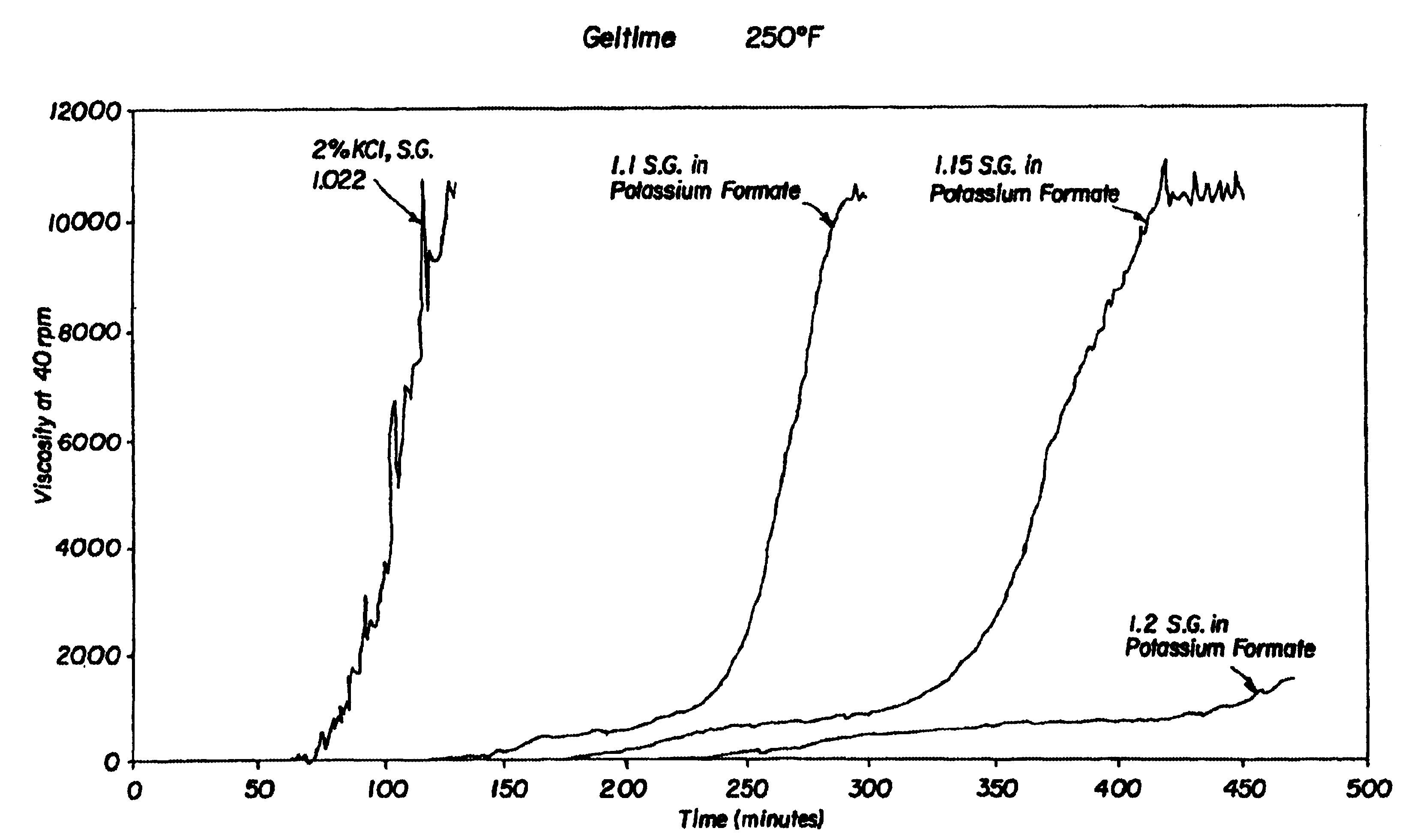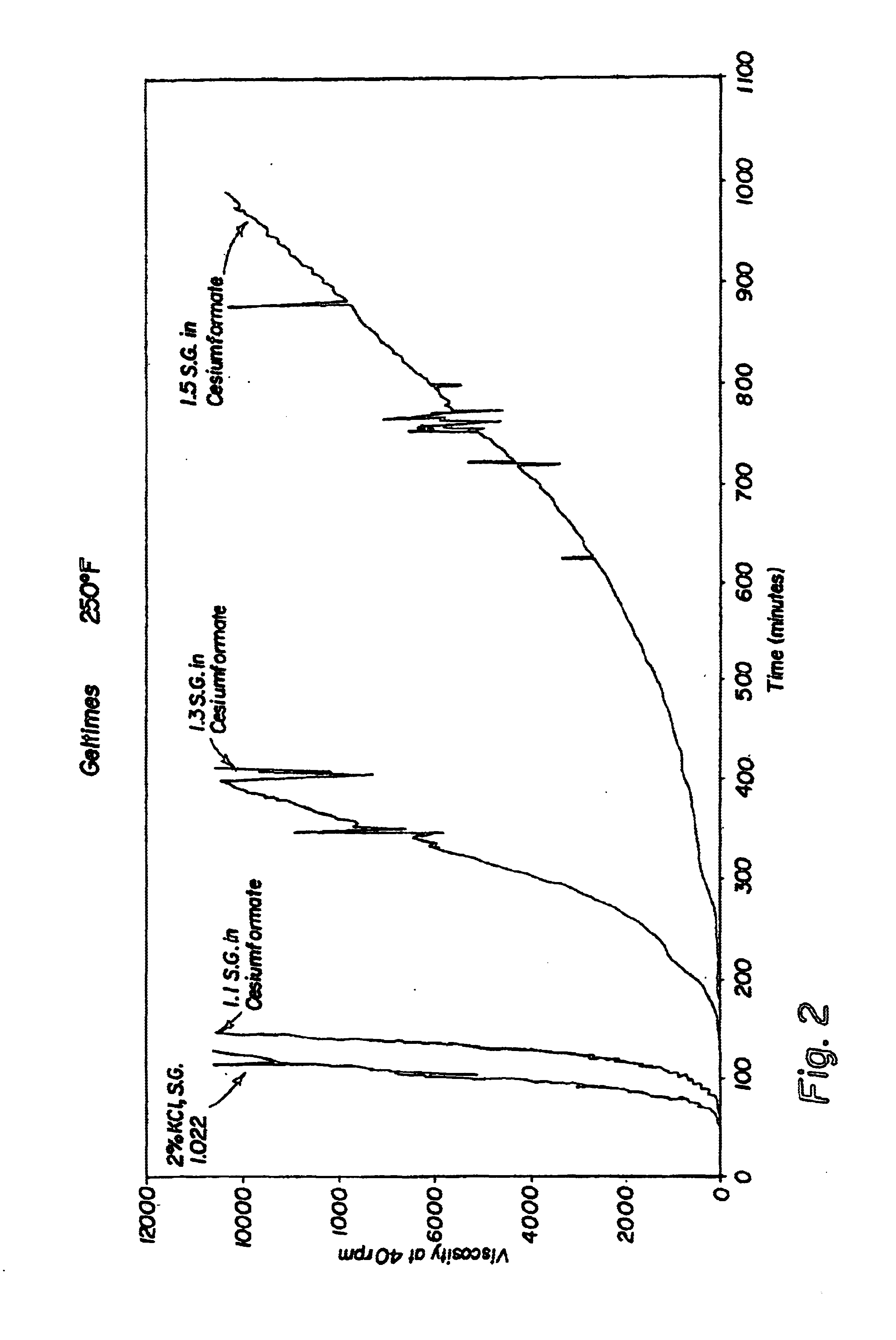Compositions and methods including formate brines for conformance control
a technology of conformance control and composition, applied in fluid removal, chemistry apparatus and processes, borehole/well accessories, etc., can solve the problems of increasing the proportion of water produced, reducing the overall yield of hydrocarbons from formation, and inefficient recovery techniques, so as to reduce the permeability of subterranean zones and increase the delay of cross-link time
- Summary
- Abstract
- Description
- Claims
- Application Information
AI Technical Summary
Benefits of technology
Problems solved by technology
Method used
Image
Examples
examples
The invention is illustrated in the accompanying figures, which show graphical plots of viscosity against time for a series of compositions. The compositions were placed in a Rheometer at 40 rpm with external heating bath and the viscosity and time measured.
Table 1 below shows the experimental data obtained for the cross-link time delay at 120 EC (250 EF) of compositions containing:
(a) a water-soluble polymer;
(b) a gelling agent;
(c) either a control of potassium chloride or a water-soluble formate; and
(d) water;
wherein the water-soluble polymer further comprises polyacrylamide t-butyl acrylate copolymer (“PatBA”) at 7% by weight of the composition;
wherein the gelling agent further comprises polyethylene imine (“PEI”) at 0.66% by weight of the composition;
wherein the water-soluble formate further comprises either potassium formate or cesium formate; and
wherein the potassium chloride, potassium formate, or cesium formate and the water is present in an amount sufficient to obtain the s...
PUM
| Property | Measurement | Unit |
|---|---|---|
| Temperature | aaaaa | aaaaa |
| Temperature | aaaaa | aaaaa |
| Density | aaaaa | aaaaa |
Abstract
Description
Claims
Application Information
 Login to View More
Login to View More - R&D
- Intellectual Property
- Life Sciences
- Materials
- Tech Scout
- Unparalleled Data Quality
- Higher Quality Content
- 60% Fewer Hallucinations
Browse by: Latest US Patents, China's latest patents, Technical Efficacy Thesaurus, Application Domain, Technology Topic, Popular Technical Reports.
© 2025 PatSnap. All rights reserved.Legal|Privacy policy|Modern Slavery Act Transparency Statement|Sitemap|About US| Contact US: help@patsnap.com



